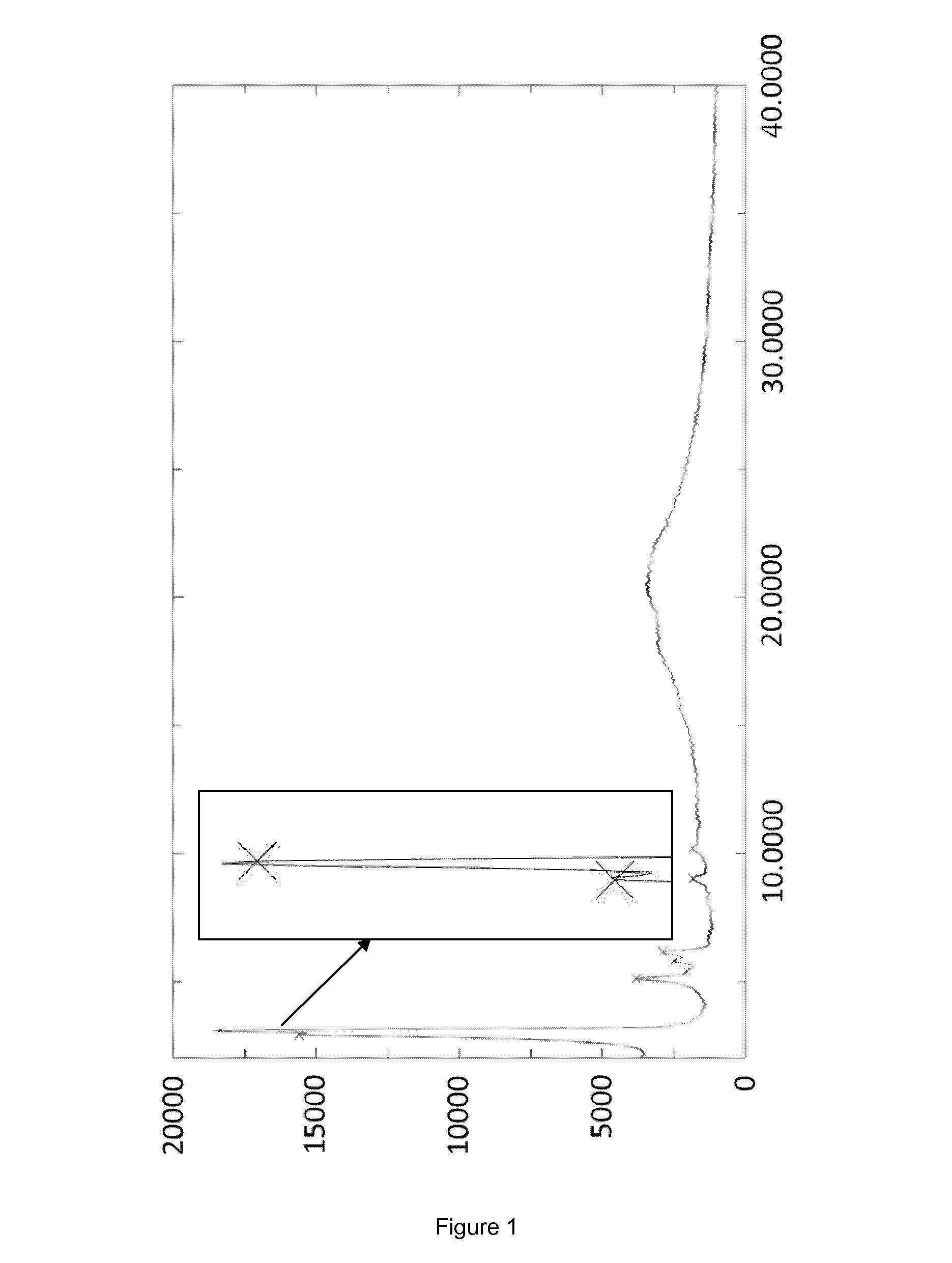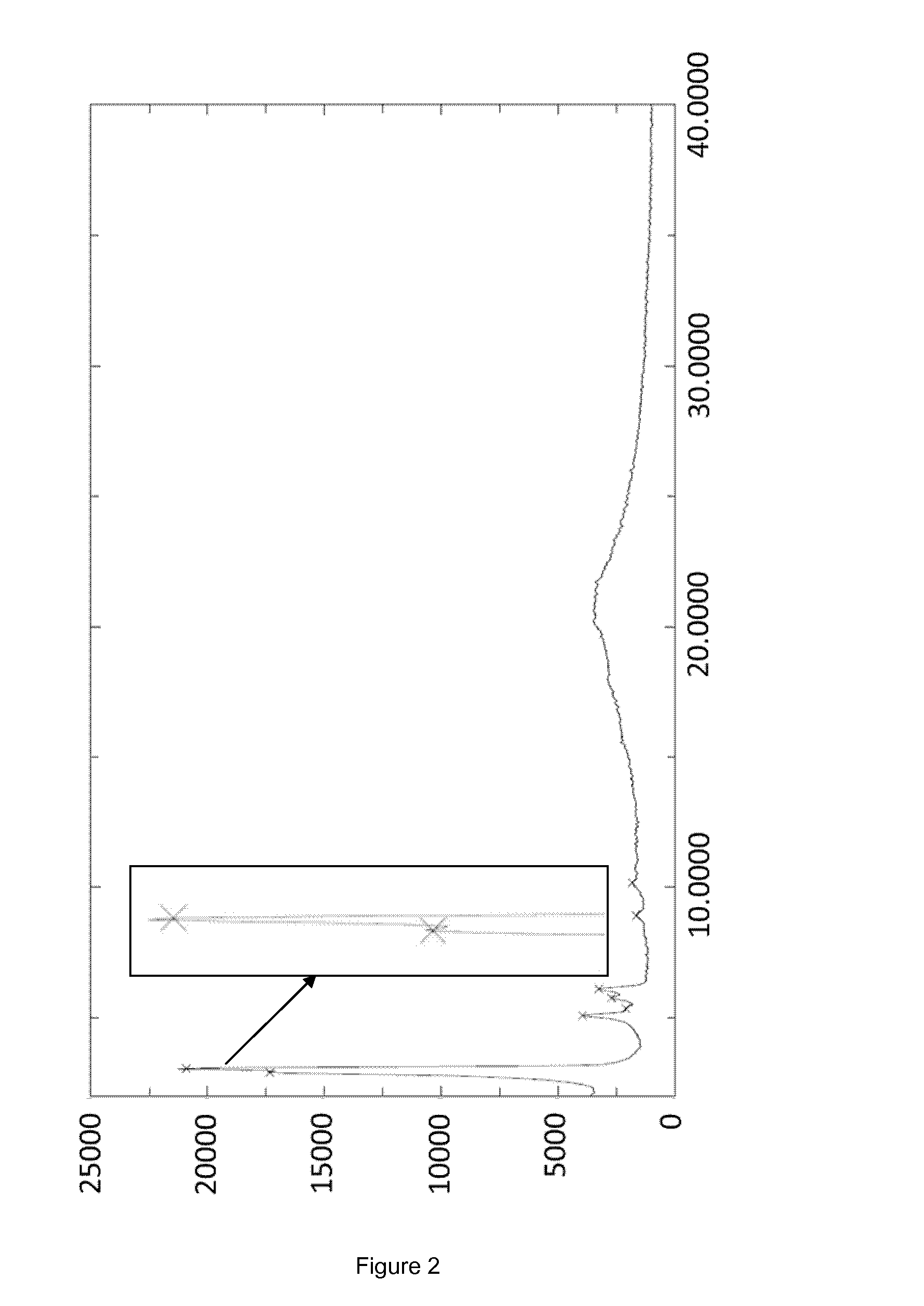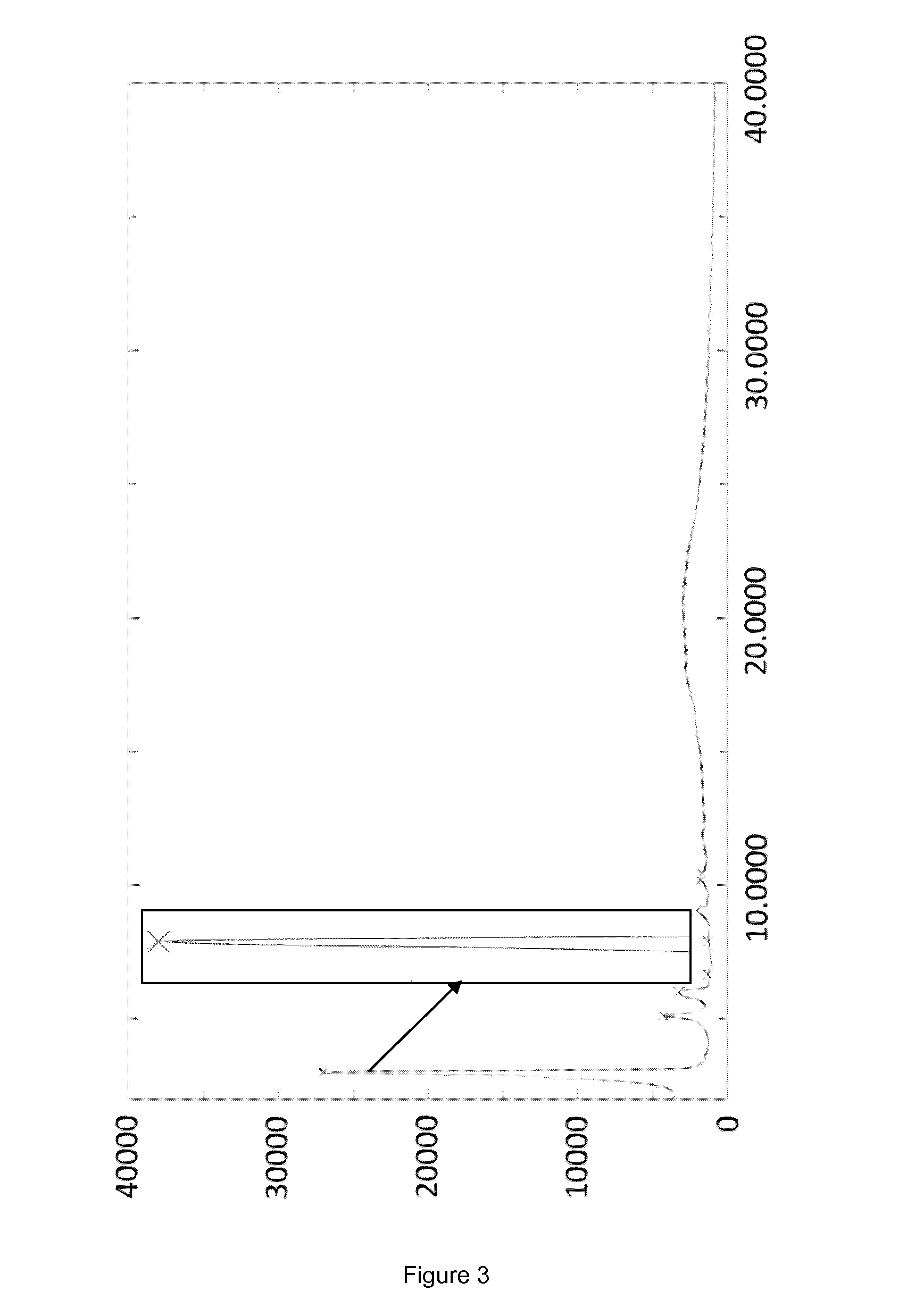Method for isolating caspofungin
a caspofungin and isolating technology, applied in the field of isolating caspofungin, can solve the problems of side products that carry through the process and end up as impurities, prone to racemization, tedious, chemically unstable and/or difficult to achiev
- Summary
- Abstract
- Description
- Claims
- Application Information
AI Technical Summary
Benefits of technology
Problems solved by technology
Method used
Image
Examples
example 1
Caspofungin Crystallization in Stainless Steel Reactor
[0054]The crystallization was started with 29 L of a caspofungin solution in ethanol (13.6 g·L−1; 394 g caspofungin) containing 6.1 w / w % water and 0.4% acetic acid, obtained as outlined in the General section. The caspofungin solution was charged into a stainless steel reactor of 350 L, equipped with an anchor type stirrer. Under stirring ethyl acetate (19 L) was slowly added in about 3 hours at about 20° C. and stirring was continued for 1 hour allowing crystals to form. Next ethyl acetate (38 L) was slowly added in 12 hours. After stirring at about 20° C. for another 2 hours, the crystals were successively filtered off by centrifugation, washed two times with ethyl acetate / ethanol / water (62.5 / 35.5 / 2 (v / v / v), 3.6 L), washed with ethyl acetate (two times 2 L), and dried under vacuum yielding 224 g caspofungin as white crystals (Form A, FIG. 1).
example 2
Caspofungin Crystallization in Stainless Steel Reactor
[0055]The crystallization was started with 32.5 L of a caspofungin solution in ethanol (12.9 g·L−1; 419 g caspofungin) containing 7.6 w / w % water and 0.4% acetic acid, obtained as outlined in the General section. The caspofungin solution was charged into a stainless steel reactor of 350 L, equipped with an anchor type stirrer. Under stirring ethyl acetate (25 L) was slowly added in about 4.5 hours at about 20° C. Stirring was continued at about 20° C. for 1 hour allowing crystals to form. Next ethyl acetate (29 L) was slowly added in 12 hours. After stirring at about 20° C. for another 2 hours, the crystals were successively filtered off by centrifugation, washed two times with ethyl acetate / ethanol / water (62.5 / 35.5 / 2 (v / v / v), 4.4 L), washed with ethyl acetate (two times 2 L), and dried under vacuum yielding 303 g caspofungin as white crystals (Form A, FIG. 2).
example 3
Caspofungin Crystallization in Glass Round Bottom Flask
[0056]The crystallization was started with 400 mL of a caspofungin solution in ethanol (13.6 g·L−1; 5.44 g caspofungin) containing 6.1 w / w % water and 0.4% acetic acid, obtained as outlined in the General section. The caspofungin solution was charged into a 2 L glass three necked round bottom flask equipped with a glass stirrer. Under stirring ethyl acetate (240 mL) was slowly added in about 3 hours at about 20° C. and stirring was continued for 1 hour allowing crystals to form. Next ethyl acetate (420 mL) was slowly added in 12 hours. After stirring at about 20° C. for another 2 hours, the crystals were successively filtered off, washed three times with ethyl acetate / ethanol / water (62.5 / 35.5 / 2 (v / v / v), 50 mL), washed with ethyl acetate (three times 50 mL) and dried under vacuum, yielding 4.0 g caspofungin as white crystals (Form B, FIG. 3).
PUM
| Property | Measurement | Unit |
|---|---|---|
| Fraction | aaaaa | aaaaa |
| Angle | aaaaa | aaaaa |
| Angle | aaaaa | aaaaa |
Abstract
Description
Claims
Application Information
 Login to View More
Login to View More - R&D
- Intellectual Property
- Life Sciences
- Materials
- Tech Scout
- Unparalleled Data Quality
- Higher Quality Content
- 60% Fewer Hallucinations
Browse by: Latest US Patents, China's latest patents, Technical Efficacy Thesaurus, Application Domain, Technology Topic, Popular Technical Reports.
© 2025 PatSnap. All rights reserved.Legal|Privacy policy|Modern Slavery Act Transparency Statement|Sitemap|About US| Contact US: help@patsnap.com



